Introducing polychords – the mind-bending guitar shapes that will take your playing into new harmonic and melodic worlds

- Oops!Something went wrong.Please try again later.
GUITAR SHOWCASE 2023: There are many ways to analyse the possibilities of diatonic harmony. Chord scales and modes are two popular choices that spring to mind. Another, often cited by Larry Carlton, is the principle of superimposing an alternative triad or arpeggio over a chord.
Try, for example, a D major triad or arpeggio over an E minor chord. The combination of these would imply an E minor 11th, even though no single instrument is playing that specific chord.
While this seems as if it should take advanced theoretical knowledge, you can go a long way towards expanding both your rhythm and solo vocabulary by trial and error. However, understanding the concept of extended and polychords is a huge advantage, so don’t keep yourself in the dark on these matters…
Our featured chords outline the harmonic possibilities as ‘standalone’ examples, but it’s perfectly possible to play a D major triad or arpeggio over a regular C major chord and get interesting results.
Example 1
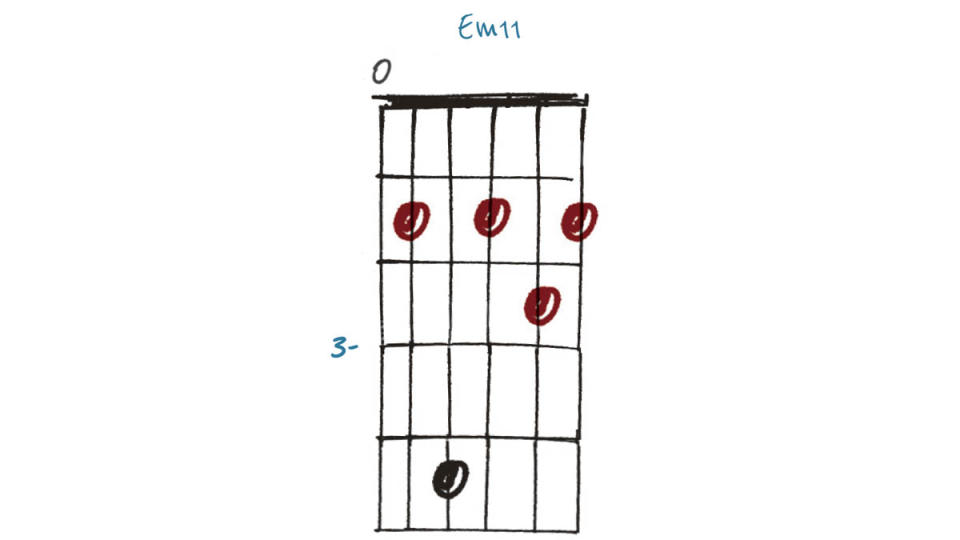
This Em11 chord contains elements of E minor – root (E), 5th (B) and b3rd (G) – on the three bass strings. However, the three treble strings give us a D major triad (A D F# on the third, second and first strings), which, when combined with, or superimposed on, the Em give us Em11. So you don’t need to wait for an Em11 chord – you can create this harmony over a regular Em chord.
Example 2
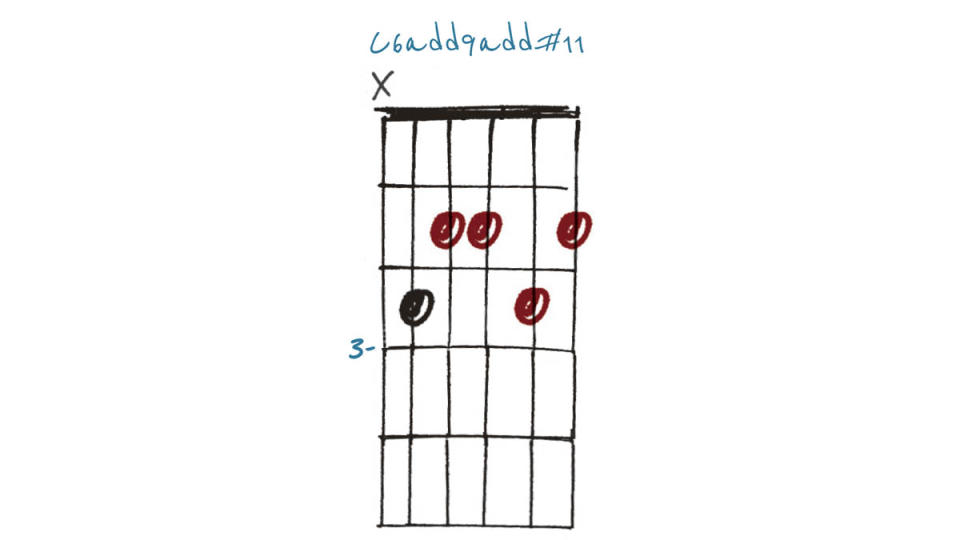
Theoretically this is a C6add9add#11. But look and listen carefully: it’s the bottom two notes of a C major chord: root (C) and 3rd (E). The top three notes form the same D major triad featured in Example 1.
A D major triad fits over this or a regular C major chord. Chord-naming conventions are important, but this is another way of viewing the harmony.
Example 3
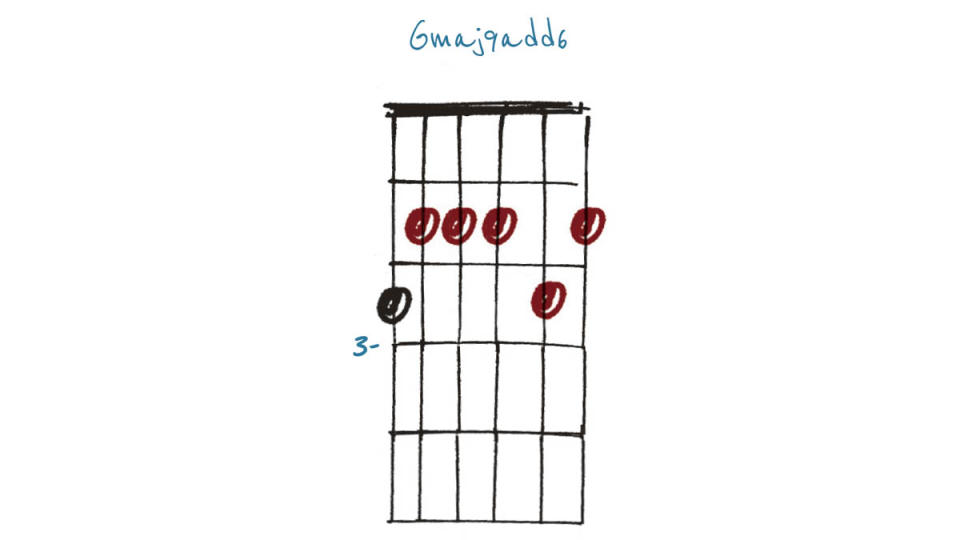
What we have here is a G6 chord on the sixth, fifth and fourth strings (G B E, respectively), with the same D major triad on top. This gives us what I will call a Gmaj9add6 chord. Whatever the name, this tells us that we can add all or part of the D major arpeggio to our repertoire of ‘licks that fit over a G major chord’!
Example 4
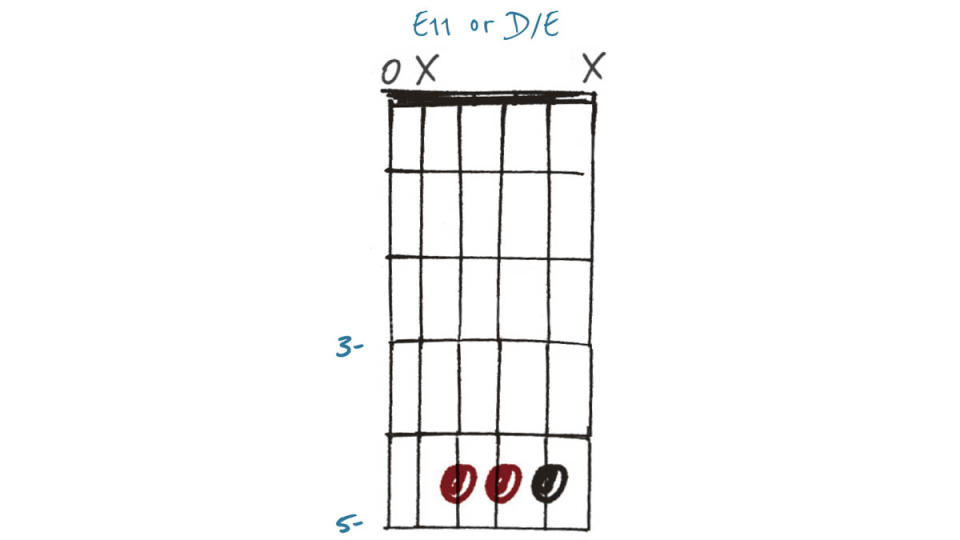
In theoretical terms, this is the simplest example: a D major triad on the second, third and fourth strings, over an E bass note. This could correctly be named E11, or a D/E ‘slash’ chord. Either way, this tells us that you can play a D major triad or arpeggio over an E major chord as well as E minor.
Example 5
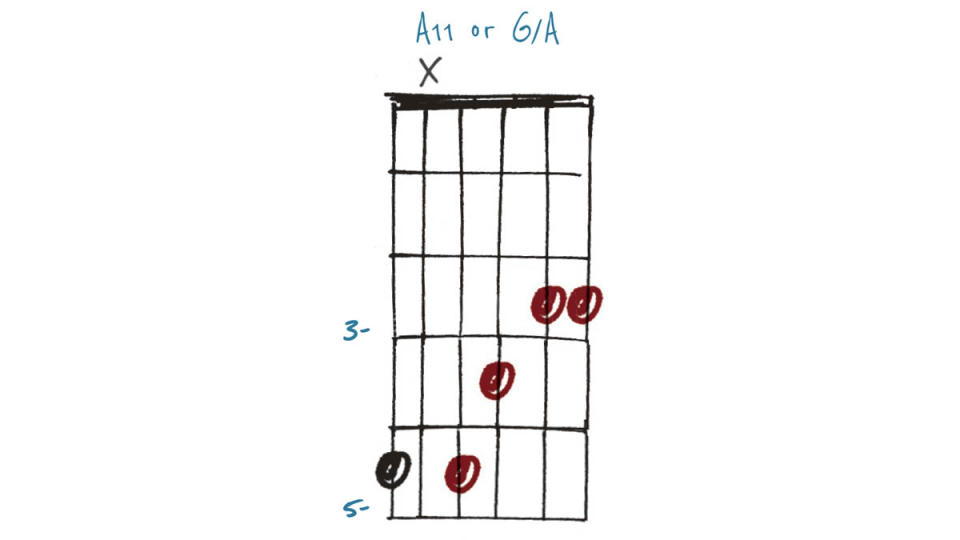
We’re pushing the boundaries here with this G/A or A11 chord. Yes, a D major arpeggio or triad will fit, but what about an E minor triad or arpeggio? E is the 5th in an A chord, so there is an existing relationship, but would that work? There’s only one way to find out…

